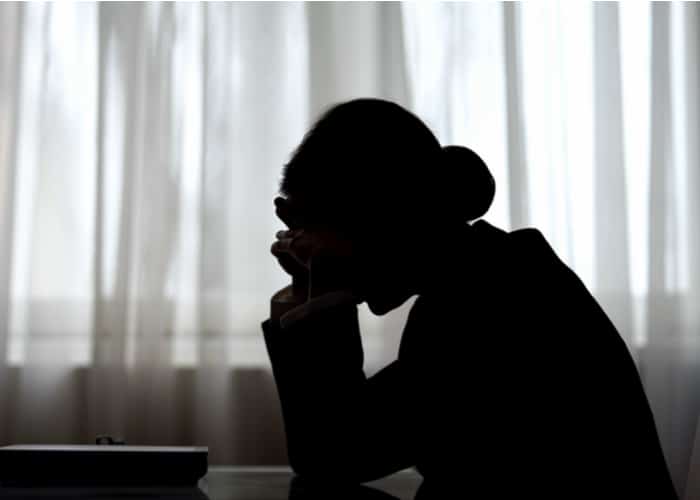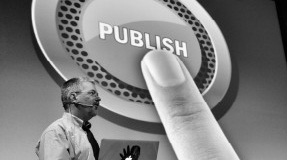
Endless hours in front of the computer screen with only a short break for lunch in the kitchen a few metres away, then back to the grind until the sun goes down and you curl into bed, only to repeat the same routine – day in day out, with nothing but a short stroll outside to put your wired mind at ease.
An ongoing sense of dread as you watch infection rates climb across the world and wonder about aging relatives, with nothing else to think about or talk about with the faces you connect with through your computer screen. Perhaps you are entirely alone, or maybe you have a partner to comfort, or kids crawling over your lap to try and placate.
After more than a year of living with a global pandemic that shut down the world, these are all too familiar scenarios. And while lockdowns are beginning to lift for many across the globe, concerns are mounting about an impending mental health crisis brought on by a year of mass isolation, uncertainty, and endless dread.
Long-suffering journalists – many of whom are already struggling with traumas of their own in a beleaguered industry known for its hostile and pressure-cooker environments – have been especially vulnerable to the effects of what psychologist Esther Perel describes as a ‘psychosocial disaster’. She refers to the collective trauma resulting from the worry, loneliness, and grief compounded by the strangeness of life and work confined to one place.
Perel spoke about these issues in a recent podcast, ‘Breaking news has broken us’, in which she explores the ways journalists have had an especially hard time finding respite and support.
“The newsroom is in a state of grief and has suffered tremendous losses over the past year. It is in a state of collective trauma, and journalists are exhausted,” she said. “They are participants of the very story they are reporting.”
The pandemic bubble
Perel is not alone in highlighting this challenge. An increasing number of journalists are coming forward with complaints of burnout and serious mental health concerns and advocating for greater support in the workplace – including John Crowley, a journalist of over 20 years. He earlier this year co-authored the Journalism in the time of Covid report. It surveyed the experiences of 130 respondents from across the world, all of whom reported to have felt stressed and burned out.
“Many of the journalists I spoke to felt they were in a ‘pandemic bubble’. Many felt it was difficult to escape from the unremitting bad news they were tasked to cover, having already put themselves in harm’s way,’ he told the European Journalism Observatory (EJO). “Journalists were also talking to people, faithfully carrying out their roles, but no-one was checking in on how they were doing,” he added.
This complaint is a common theme in the EJO’s interviews with journalists struggling with mental health through Covid-19.
“Journalists have worked extremely hard over the past year, at varying levels of personal danger. But we’ve all had this pandemic hanging over us and no escape,” said one broadsheet journalist covering the pandemic out of Asia.
“I found the fact that the virus travelled in waves around the world was like watching some sort of slow-motion crash…. From Asia, I could see the inevitability of it arriving in Europe and the US, but those countries weren’t acting, weren’t closing borders or scanning temperatures. A friend in the UK sent me masks, and I told my family to buy disinfectant wipes to prepare. My friend did prepare, but most people had no idea,’ she said.
Her challenges were compounded by workplace attitudes that made her feel unsupported, undervalued, and at times unsafe. She believes journalism’s famous and tone-deaf ‘macho culture’ is partly to blame for this difficult experience.
“HR sent around a number of emails with tips. But one of them was to switch off and avoid the news, which is impossible as a journalist covering the pandemic. There’s a certain sense in our newsroom that we should run towards the exciting stories and deal with the consequences later, if at all. No matter how traumatic they might be,” she said, adding that she struggled with the feeling that the stressful impact of her role was being minimised.
“My editors dismissed the notion that constantly scanning for news about the virus and its various effects could have any impact on me, and I was told that vaccines were coming and there was good news out there, so it wasn’t all depressing,” she added.
She attributes much of the thoughtlessness on the part of management to the male-dominated culture in her newsroom, complaining about the bravado that came with treating the virus as a trivial matter. “I actually don’t think our male colleagues wash their hands that much, which made me want to avoid the office,” she added.
The perfect storm
Crowley corroborates the sentiment that journalism’s outdated macho culture has contributed to the mental health crisis facing journalists worn down by a year of Covid-19 reporting and battered by a host of accompanying structural and societal issues that blight the industry.
“Journalists over the past decade have found themselves in the midst of a ‘perfect storm’. Failing business models, job insecurity, vicarious trauma, disinformation, online harassment, and the pressure to be constantly ‘on’ have taken their toll. That’s before we even get to the pandemic. These are industry-wide problems that are only set to become more acute. Something has got to give,” he said.
The media’s blinkered approach to dealing with the symptoms of stress and trauma is certainly not helping, he adds, with newsrooms across the world burying their heads in the sand when it comes to addressing an impending mental health crisis.
“Newsrooms tend to be incredibly macho. That’s because many are still run by white, middle-aged men who have learned their trade by doing the ‘hard yards’. This probably involved being harangued, treated poorly, and expected to work long hours. You can understand why some might think: ‘If I learned that way, then new entrants should do the same. It’ll toughen them up.’ What I would say is, take a look around you. The world is changing.”
Crowley added that the younger generation has become more adept at knowing and articulating their thoughts around mental health, meaning they are far less likely to put up with the treatment his generation endured.
“There’s a reckoning coming from those who think we can continue ad infinitum in this fashion. To make change occur, we need to move from conversations to having our voices heard. If this means being shrill, then so be it,” he said.
A marathon with no finish line
As Crowley so eloquently described, the stress of the pandemic has been the tip of the iceberg, with many long-suffering journalists already having to grapple with the effects of previous traumatic reporting experiences.
Among them is Jarrod Watt – a seasoned Australian reporter who now serves as Specialist Digital Editor at the South China Morning Post in Hong Kong. He works long hours covering the pandemic while also dealing with the experience of reporting on last year’s harrowing unrest – not to mention managing PTSD symptoms brought on by covering bushfires each summer for the Australian Broadcast Corporation.
“I spent more than a decade reporting, producing, and coordinating bushfire coverage, and years dealing with the PTSD of being constantly alert for four months each summer, constantly scanning maps and weather bulletins for possible threats to towns and cities,” he told the EJO.
“The once yearly sprint was replaced by a marathon with no clear finish line, and a whole new challenge of scrolling through news feeds each day, keeping across the misinformation going around social media, watching as things got really bad in my partner’s home country, watching my friends and family back in Melbourne go through a very intensive lockdown,” he said.
With this sensitivity towards how reporting on difficult events can cause psychological damage, he was disheartened to see the effects last year’s turmoil in Hong Kong, which included violent clashes between local police and protestors, had on the city’s reporters.
“PTSD in journalists is not considered a thing unless you’ve been in a shooting war. But it is a thing,” he said. “I watched so many great young journalists in Hong Kong just get broken during 2019 and left the business,” he added. Those who have stayed in the game through COVID, like Watt, now also have to contend with the legacy of last year’s events and the shocking level of brutality on streets that, up until then, had been considered amongst the world’s safest.
One young Hong Kong reporter is still suffering from what she describes as an extended mourning period after having reported on the protests on behalf of an ‘alternative online publisher’ that provided no hostile environment training nor any riot gear. As a bilingual journalist, she found herself weighed down by far too much work and far too little support – a set of circumstances not unfamiliar to local journalists.
“Part of the problem was that [the publisher] was a small site, and the boss didn’t expect me to cover the protests as extensively, but also part of it was that assumption that if you’re youngish and want to report, you’ll go out of your way to do the work because (of the) experience.… But the result of being the only person in the office who spoke Cantonese and bearing the brunt of the reporting work was that I was just getting really burned out, which I don’t think my bosses at the time were particularly aware of,” she added.
Through the unrest, this reporter became increasingly exhausted by the workload and the stress to the extent that she passed out on public transport. Since then, she has moved on to a larger organisation, where she now covers global news. But her memories of last year’s unrest still haunt, as it does many in the city.
“At work, I do international news mostly these days, but every now and then, I have found myself randomly crying at my desk whenever I have to listen for international news packages, and there’s just the sound of tear gas going off.”
Enough is enough
The question now is, what steps can be taken to address trauma in newsrooms and to create an environment where a diversity of talent can thrive?
Perel’s podcast suggests shifting away from considering trauma as an experience for individuals to manage and strengthening supportive relationships inside and out of work.
“We hear a lot about meditation and mindfulness, when in fact much of what we need during a time of collective trauma is tapping into the resources of other people,” she said. Indeed, all the reporters interviewed by the EJO stressed the importance of reaching out to friends, family, and partners for support.
For Crowley, the onus should be on newsroom managers to take better care of its reporters and ensure their wellbeing is prioritised.
“Newsroom leaders and management need to own this problem. Yes, there are notable exceptions where enlightened news organisations are thinking of staff wellbeing. But by and large, what I see are heads being thrust into the sand. Looking after your staff is, of course, the right thing to do, but when we are so ready to preach to the public about mental health, we also need to hold ourselves to a higher standard,” he said.
“Enough is enough. It’s time for the industry to take stock and listen to its most precious resource – its people. You can accuse journalism of failing to adapt to the Internet and changing consumer habits over the last two decades. Let’s not make the same mistake with our working culture.”
Opinions expressed on this website are those of the authors alone and do not necessarily reflect or represent the views, policies or positions of the EJO or the organisations with which they are affiliated.
If you liked this story, you may also be interested in: Rescuing journalism from the Covid-19 assault
Tags: Covid mental health impact, covid-19 media impact, Covid-19 reporting, Journalism and mental health













































